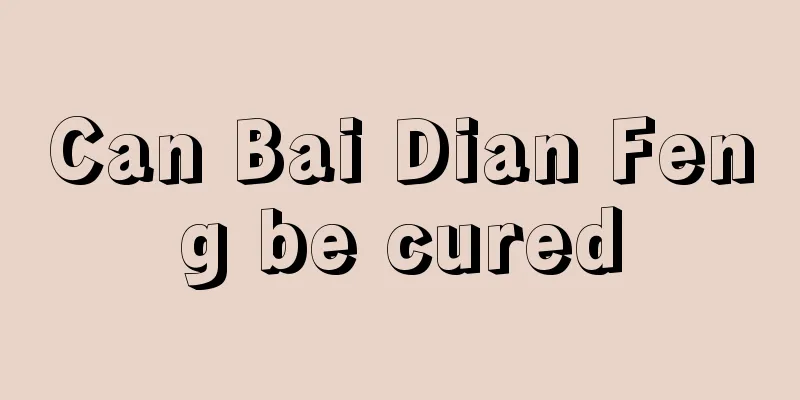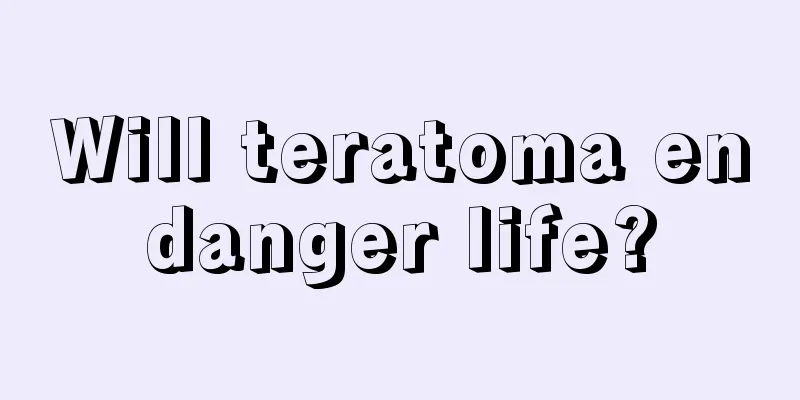Does Chinese medicine treat gallbladder cancer with chemotherapy?

|
Primary gallbladder cancer is one of the common malignant tumors of the biliary system, ranking fifth among digestive tract tumors in my country. Its incidence rate accounts for about 0.75-1.2% of all cancers, and has been increasing in recent years. The cause of gallbladder cancer is still unclear. It is speculated that the cause is related to the long-term stimulation of cholelithiasis. 70-96.9% of patients have gallbladder stones. The onset of the disease is related to diet, bacterial infection, parasites, and gallbladder papilloma. The mechanism is that chronic stimulation of gallbladder mucosa by stones or foreign bodies may cause mutation of mucosal epithelial cells and malignant transformation. Gallbladder stones are often accompanied by chronic cholecystitis, and long-term chronic inflammation causes cancer. Gallbladder cancer can be divided into scirrhous cancer, adenocarcinoma, squamous cell carcinoma, mucinous carcinoma, undifferentiated carcinoma, pigmented carcinoma and papillary carcinoma. About 75%-90% are well-differentiated adenocarcinomas, 10% are undifferentiated carcinomas, and squamous cell carcinomas account for less than 10%. Western medicine adopts a comprehensive treatment with surgery as the main method for gallbladder cancer. Surgical treatment is mainly radical resection, followed by chemotherapy, radiotherapy and immunotherapy. Traditional Chinese medicine treats this disease mainly by syndrome differentiation and treatment. There are also some single prescriptions and proven prescriptions for this disease, and acupuncture therapy can be used in combination. The prognosis of this disease is poor, and more than 80% of patients die within one year after diagnosis. However, there are some case reports in China about patients who have survived for many years after surgical resection of gallbladder cancer combined with traditional Chinese medicine treatment, supplemented by diet therapy or qigong. 2. TCM treatment and efficacy TCM treatment of gallbladder cancer is divided into several methods: syndrome differentiation and treatment, single prescription treatment and acupuncture treatment. Currently, most TCM treatments for gallbladder cancer are performed after surgery, or in combination with chemotherapy. However, there are also reports of patients who are unable to undergo surgery or are unwilling to undergo surgery and are treated with Chinese medicine alone. 1. Treatment based on syndrome differentiation Clinically, different syndrome types are classified according to the specific symptoms and signs of the patients. For stasis type, damp-heat type and fire toxicity type, Da Chaihu Tang is used as the main prescription, and the prescription is modified according to the symptoms; while for deficiency of vital energy type, Bazhen Tang combined with Xiaoyao Powder is used as the main prescription for treatment. 1) Stasis type: Treatment: Soothe the liver and regulate qi, reduce adverse reactions and relieve pain Prescription: 10 grams of Bupleurum, 10 grams of Scutellaria, 12 grams of Citrus aurantium, 15 grams of White Peony, 12 grams of Pinellia, 6 grams of Citrus Reticulata, 10 grams of Trillium, 10 grams of Curcuma, 18 grams of Hedyotis diffusa, 15 grams of malt, 6 grams of Rhubarb, and 10 grams of Atractylodes. 2) Damp-heat type: Treatment method: Clear away heat and dampness, soothe the liver and regulate qi. Prescription: 12 grams of Bupleurum, 10 grams of Scutellaria, 15 grams of Artemisia Capillaris, 9 grams of Rhubarb, 12 grams of Pinellia, 10 grams of Curcuma, 15 grams of Lysimachia, 15 grams of Hedyotis diffusa, 12 grams of Citrus aurantium, 12 grams of Malt, 10 grams of Gardenia, 6 grams of Tangerine peel, and 12 grams of Atractylodes. 3) Fire poison type: Treatment: Purging fire and detoxifying, soothing the liver and clearing away heat Prescription: 10 grams of bupleurum, 10 grams of scutellaria, 9 grams of rhubarb (added later), 10 grams of immature bitter orange, 10 grams of gardenia, 30 grams of gypsum, 15 grams of capillaris, 30 grams of imperata root, 6 grams of coptis, 15 grams of white peony root, 15 grams of oldenlandia diffusa, and 18 grams of malt. 4) Deficiency of vital energy type: Treatment: Nourish both Qi and blood, strengthen the spleen and benefit the kidneys Prescription: 20 grams of Pseudostellaria baicalensis, 30 grams of Astragalus membranaceus, 10 grams of Atractylodes macrocephala, 12 grams of Poria cocos, 6 grams of Tangerine peel, 12 grams of Polygonatum sibiricum, 30 grams of Millettia reticulata, 15 grams of White Peony Root, 10 grams of Epimedium, 12 grams of Rehmannia glutinosa, 15 grams of Malt, and 15 grams of Oldenlandia diffusa. 2. Clinical syndrome differentiation and addition and subtraction of medication: Heat-reinforced gypsum, honeysuckle, isatis root, forsythia For constipation, use a large amount of rhubarb, add Glauber's salt, Magnolia bark, and radish seeds. Add costus root, toosendan fruit, Corydalis yanhusuo and white peony root for pain. For vomiting, add Pinellia, Rhizoma Anemarrhenae, ginger, magnetite, loquat leaf, Patchouli, Inula, and Amomum. For loose stools, add Atractylodes lancea, Coix seeds, lentils, yam, and pomegranate peel. For blood stasis, add peach kernel, safflower, red peony root and radix angelicae. For loss of appetite, add Patchouli, Perilla frutescens, barley sprout, malt, hawthorn, Shenqu, and yam. For abdominal bloating, add radish seeds, dried tangerine peel, amomum villosum, agarwood, magnolia bark, tangerine peel, and costus root. 3. Commonly used anti-cancer Chinese medicines for gallbladder cancer: Oldenlandia diffusa, Scutellaria barbata, Fleabane, Smilax glabra, Atractylodes macrocephala, Sophora flavescens, Duchesnea sinensis, Solanum nigrum, Tripterygium wilfordii, Pyrus nobilis root, Geum jasminoides root, Wild grape root, Polygonum cuspidatum, and Scutellaria baicalensis. 4. Traditional Chinese medicine treatment after gallbladder cancer surgery 1) After cholecystectomy, the patient has bloating in the right hypochondrium or stomach, loss of appetite and bitter taste in the mouth, constipation, fatigue, yellow and greasy tongue coating, and stringy pulse. The treatment should be to soothe the liver and promote bile secretion, and clear away dampness and heat. The prescription is Da Chaihu Decoction with modifications. Medicinal ingredients: 10g of Bupleurum, 10g of processed Pinellia, 12g of stir-fried Scutellaria, 10g of Citrus aurantium, 10g of raw Rhubarb (added later), 30g of Hedyotis diffusa, 10g of Parsley, 30g of Lysimachia grandiflora, 10g of Curcuma aromatica, and 10g of Aucklandia lappa. 2) After palliative surgery, the common bile duct is incised and a T-tube is placed for drainage, or percutaneous transhepatic bile duct drainage is performed. Symptoms include scleral skin jaundice, distension and pain in the right hypochondrium, local palpable masses, constipation, or clay-colored stools, bitter and sticky mouth, poor appetite and nausea, yellow and greasy tongue coating, and stringy and rapid pulse. Treatment should be to soothe the liver and soften the hard masses, and to clear dampness and heat. The prescription is Da Chaihu Tang combined with Da Huang Zhe Chong Wan with modifications. Medicinal use: 10 grams of Bupleurum, 10 grams of processed Pinellia, 10 grams of Scutellaria, 10 grams of Guang Muxiang, 10 grams of Zhishi, 10 grams of Guang Yujin, 30 grams of Artemisia capillaris, 10 grams of Zhe Chong, 10 grams of peach kernel, 6 grams of leech, 30 grams of Hedyotis diffusa, 12 grams of Polygonum cuspidatum, and 10 grams of raw rhubarb (added later). If the bile duct is secondary to infection, the symptoms are high fever that does not subside, add 12 grams of Gentiana, 10 grams of Coptis chinensis, and 10 grams of Gardenia. 3) For elderly patients with extensive metastasis of gallbladder cancer, deficiency of vital energy, depletion of yin fluid, emaciation, cachexia, fatigue or even bedridden, low fever in the afternoon, dry mouth and poor appetite, dark jaundice, clay-like stool, red urine, palpable mass under the right rib, red tongue without coating, and fine pulse, treatment should be to invigorate qi and nourish yin, clear and remove blood stasis. Medicinal use: 12g of Pseudostellariae Radix, 10g of Adenophora cochinchinensis, 10g of Radix Ophiopogonis, 10g of Radix Rehmanniae, 10g of Rhizoma Anemarrhenae, 12g of Dendrobium officinale, 10g of Atractylodes macrocephala, 10g of Fructus Aurantii Immaturus, 15g of Artemisia Capillaris, 30g of Hedyotis diffusa, 15g of Lithospermum officinale, 10g of Scolopendra subspinipes, 0g of Semen Persicae, 12g of Radix Paeoniae Rubrae, 10g of Rheum officinale (added later), and 10g of Curcuma aromatica. |
<<: Can gallbladder cancer be treated with stents?
>>: Rehabilitation treatment for gallbladder cancer
Recommend
Which lumbar vertebra is the navel level with
The belly button is a very important position, be...
Why do I feel dizzy all of a sudden?
There are many reasons for dizziness. For example...
Should I wash my hair more or less due to hair loss?
Hair loss is something that no one wants to see. ...
What to do if your face is allergic to the local climate
Many people find it difficult to adapt to the loc...
Can down jackets be washed? This method is invaluable!
When a down jacket becomes dirty, many people wil...
What is the best way to treat crowd phobia?
Regarding the problem of agoraphobia, everyone sh...
Can people with fatty liver eat peanuts?
Peanuts are a common food in our lives. They cont...
What is non-Hodgkin's lymphoma and how to treat it
What is Non-Hodgkin's Lymphoma? How is it tre...
Can I have a physical examination during menstruation?
When going through the entry procedures, many com...
What are the benefits of soaking your feet in ginger water?
As we all know, there are many acupoints on the s...
Correct nursing methods for lung cancer
Lung cancer is a common malignant lung tumor. In ...
What is the reason for peeling
Peeling is a common symptom. Generally, peeling w...
What causes brain cancer
Brain tumor is a relatively serious disease. Beca...
What is mild fatty liver
Fatty liver is a liver problem that many people h...
Symptoms of thoracic vertebrae compressing nerves
The phenomenon of certain organs compressing the ...









